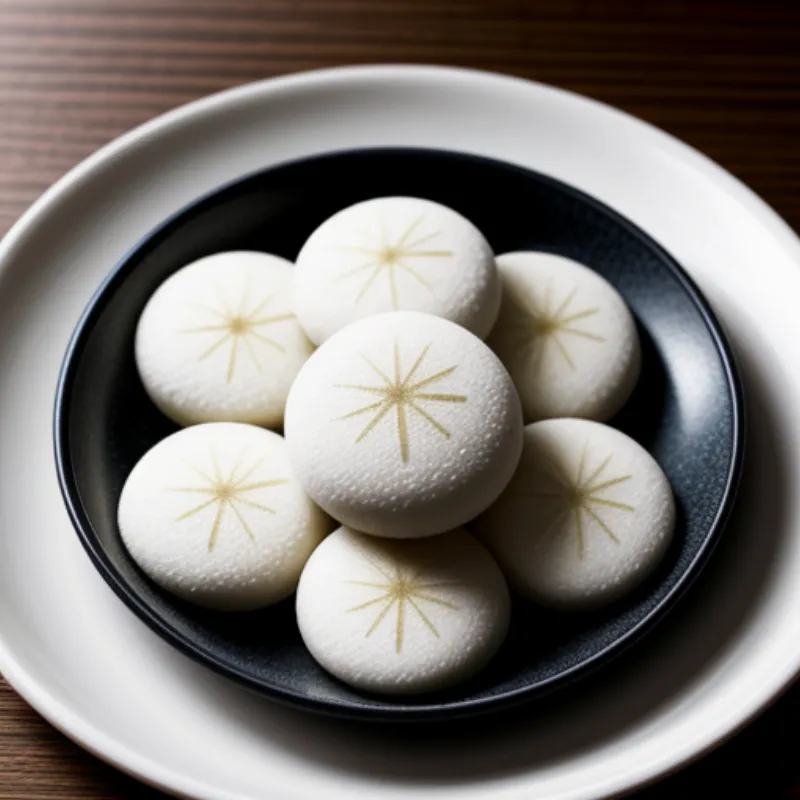Idli, the beloved South Indian breakfast staple, is a steamed rice cake that’s as versatile as it is delicious. These soft, pillowy delights are a testament to the beauty of simple ingredients and time-honored techniques. Whether you’re a seasoned cook or a curious beginner, this comprehensive guide will equip you with all the knowledge you need to make perfect idlis right in your own kitchen.
What is Idli?
Idli is a steamed rice cake that originated in South India. It is made from a fermented batter of rice and lentils, giving it a slightly tangy, subtly sour flavor. Idlis are naturally vegan and gluten-free, making them a popular choice for those with dietary restrictions. They’re incredibly versatile and can be enjoyed for breakfast, lunch, or dinner.
Ingredients You’ll Need:
- 1 cup parboiled rice (also known as idli rice)
- 1/2 cup urad dal (split black gram without skin)
- 1/4 teaspoon fenugreek seeds
- Salt to taste
- Water for soaking and grinding
- Oil for greasing the idli plates
Equipment for Idli Making:
- Two large bowls for soaking
- A blender or grinder
- A steamer pot (preferably an idli steamer)
- Idli plates or molds
Step-by-Step Guide to Making Perfect Idlis:
1. Soaking the Rice and Lentils:
- Rinse the parboiled rice and urad dal separately under running water until the water runs clear.
- In two separate bowls, soak the rinsed rice and urad dal with enough water to cover them completely. Add the fenugreek seeds to the bowl with the urad dal. Let them soak for at least 6-8 hours or overnight.
2. Grinding the Batter:
- Drain the soaked rice and dal separately.
- Grind the urad dal with a little water at a time to a smooth and fluffy batter. Add water sparingly to achieve a batter that is not too thick nor too thin.
- Transfer the ground urad dal batter to a large mixing bowl.
- Grind the soaked rice into a slightly coarse batter, adding water as needed.
- Combine the rice batter with the urad dal batter in the mixing bowl.
3. Fermentation is Key:
- Add salt to the combined batter and mix well using your hands or a whisk. This helps in developing gluten and making the idlis soft.
- Cover the bowl with a lid or a clean kitchen towel and let the batter ferment in a warm place for 8-12 hours or overnight. The batter should almost double in volume and have a slightly tangy aroma when it’s ready.
4. Steaming the Idlis:
- Grease the idli plates or molds with a little oil.
- Pour a ladleful of the fermented batter into each mold.
- Fill the steamer pot with water and bring it to a boil.
- Place the filled idli plates in the steamer, cover the pot with a lid, and steam for 10-12 minutes over medium heat.
- To check if the idlis are cooked, insert a toothpick into the center. It should come out clean if done.
5. Serving the Idlis:
- Once cooked, remove the idli plates from the steamer and let them cool for a few minutes.
- Use a spoon or your fingers to gently remove the idlis from the molds.
- Serve the hot, soft, and fluffy idlis with sambar, chutney, or any other accompaniment of your choice.
 Steamed Idlis
Steamed Idlis
Tips and Tricks for the Best Idlis:
- Use good quality parboiled rice (idli rice) and urad dal for the best results.
- Soaking the rice and lentils for a longer duration helps in easier grinding and fermentation.
- The fermentation time may vary depending on the temperature and humidity.
- Do not overfill the idli molds as the batter will rise while steaming.
- Leftover batter can be stored in the refrigerator for a day or two.
- You can add finely chopped vegetables, grated carrots, or chopped herbs to the batter for variations.
FAQs about Making Idlis:
Q: Can I make idlis without a steamer?
A: While a steamer is traditionally used, you can also make idlis in a pressure cooker without the whistle, or even in a large pot with a tight-fitting lid and a rack or trivet to elevate the idli plates.
Q: My idlis turned out sticky. What went wrong?
A: Sticky idlis are usually a sign of under-fermented batter or too much water added while grinding. Make sure you use the correct ratio of rice to lentils and allow the batter to ferment properly in a warm place.
Q: Can I use regular rice instead of parboiled rice?
A: While you can use regular rice, it won’t yield the same soft and fluffy texture as parboiled rice. Parboiled rice has a lower glycemic index and is easier to digest, making it the preferred choice for idlis.
 Idli Batter
Idli Batter
Conclusion:
Making idlis at home is a rewarding experience that allows you to savor the authentic flavors of South India. With this detailed guide and helpful tips, you’ll be well on your way to creating soft, fluffy, and delicious idlis every time. So, gather your ingredients, put on your apron, and embark on this culinary adventure! Don’t forget to share your idli-making experiences and any variations you try in the comments below. Happy cooking!
For more South Indian breakfast recipes, check out our guides on How to Make Steamed Idli and How to Make Dosa.
